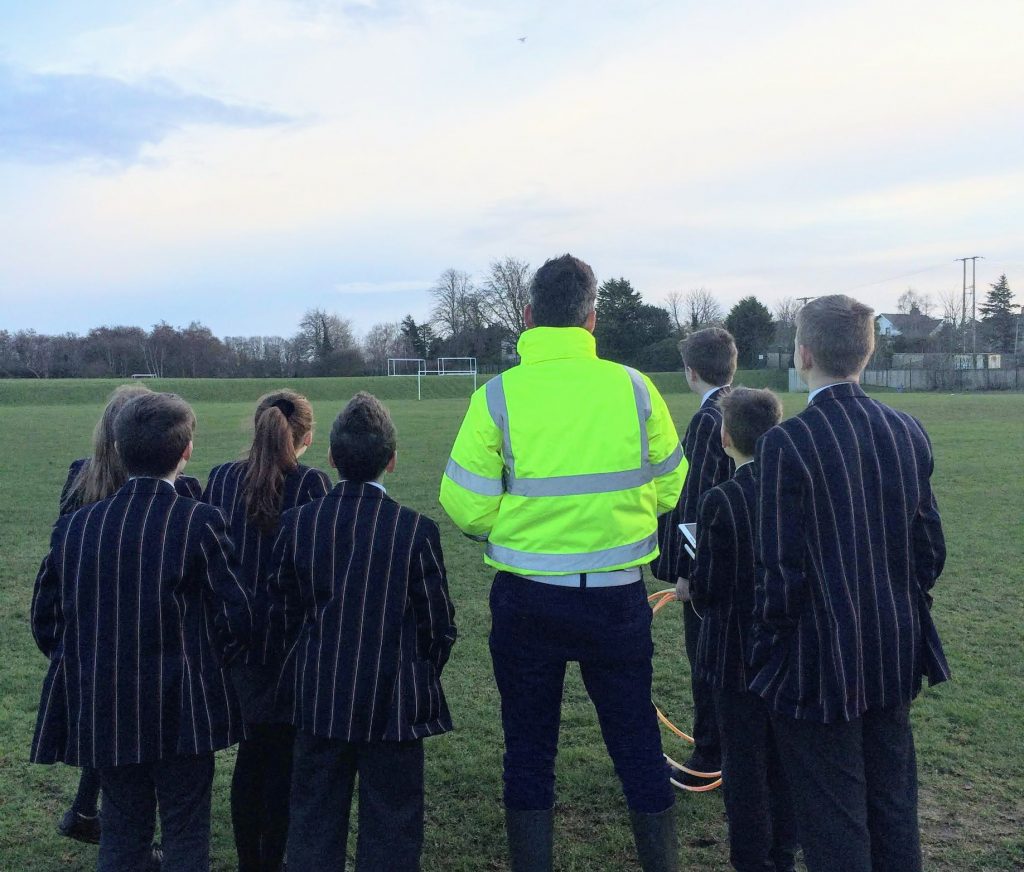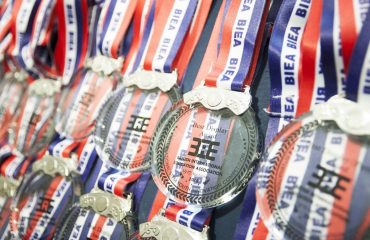
Students from the Coleraine Grammar School in Northern Ireland and their teammates flew their drone with their instructor starting their journey on the BIEA 2019 STEM competition.
BIEA was impressed with the entries submitted for the first round of the competition. It was obvious that many teams had worked hard to thoroughly research, design and write up their ideas for saving animal species from extinction.
The range of animals was impressive, and we were particularly impressed with entries that included animals relevant to the teams’ local area. This included the entry by Coleraine Grammar School on Basking Sharks that had been seen in Irish waters. They followed up their ideas with a visit from a local university lecturer to discuss drones. We were also impressed by Srednja skola Jablanica, a school in Bosnia, who focused on Bosnian wildlife, including the lynx, wolf and mouflon. Their report reflected some excellent planning and well-described division for team roles. Visakha Valley School chose the Red Panda for their project focus, and submitted an outstanding report including details about each of the team members and their supporting staff. One of the teams from Sheffield Park Academy also included details about team member roles in their project on the Tasmanian Devil.
Some teams incorporated innovative ways of experimentation for the report. One of the teams from St. Margaret’s School conducted a field test to find out how many pupils (‘animals’) could be counted by their drone at different heights in their project on Darwin Foxes. Team Endeavour, in their report on Sea Turtles, tested the strengths of different materials and measured the thrust of a motor to help determine their final drone specifications.
We also had a lot of teams using CAD and 3D printing to help with drone designs. Topkids Center included an outstanding design specification for their project on the Bactrian Camel. A team from Kent College 3D printed their design from their specifications, as did I Liceum Ogólnokształcące im. St. Dubois, who also developed a flight simulated path for their drone project on Zebra.
Some outstanding hand drawn specifications were also included – we were particularly impressed with the diagram for the Snow Leopard tracking drone by Alpha Preparatory School, along with the detailed exploded diagram of drone by the Westcliff High School for Boys and their project on the Amur Leopard, and the original drone design by the American International School of Cape Town who designed a drone with caterpillar tracks for tracking Savannah wildlife. The team from the Shanghai Foreign Language School Affiliated to SISU included in depth calculations for the drone range using 5G wireless signals around a Tibetan antelope animal reserve.
These are just a small selection of some of the amazing reports submitted for the first round of the competition. We would like to thank everyone who has worked so hard in the first round, and now we are very much looking for to seeing the great work continued in the second rounds of the competition.



